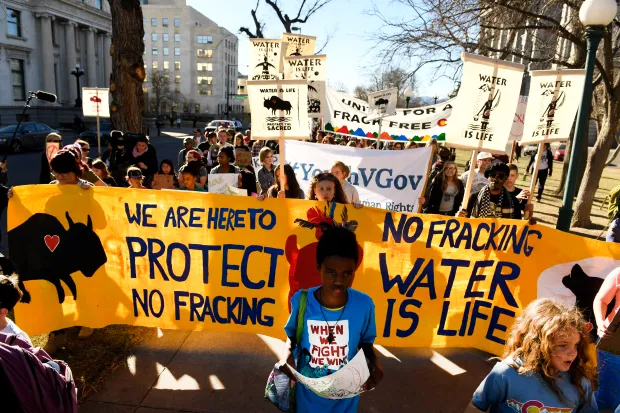Are you comfortable with fracking in your backyard?
In Colorado, “backyard fracking” is more common than you might realize.
While incidents involving oil and gas operation are rare, they still occur, disastrous results can leave famlies devastated. Our group was curious about how much the local population knew about fracking given its prevalence in Colorado. This interest grew when we researched a house in Firestone, Colorado that exploded. We were also concerned about the negative health impacts and the importance of fracking in regards to the domestic natural gas and oil supply. Fracking is a complicated topic, starting off we must first understand what exactly fracking is.

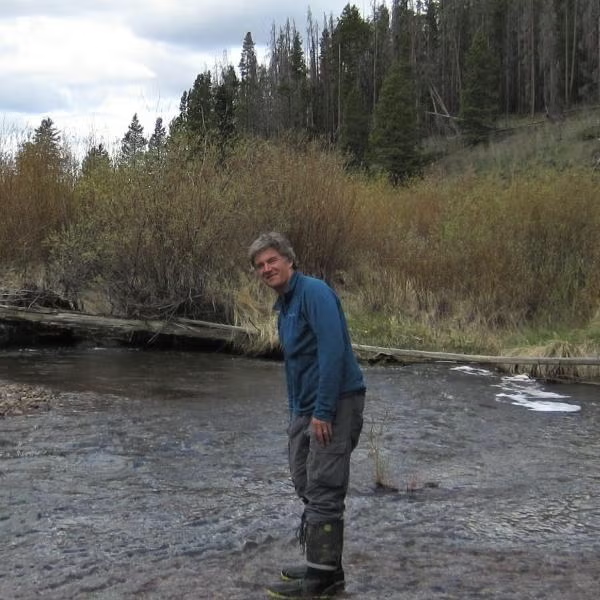




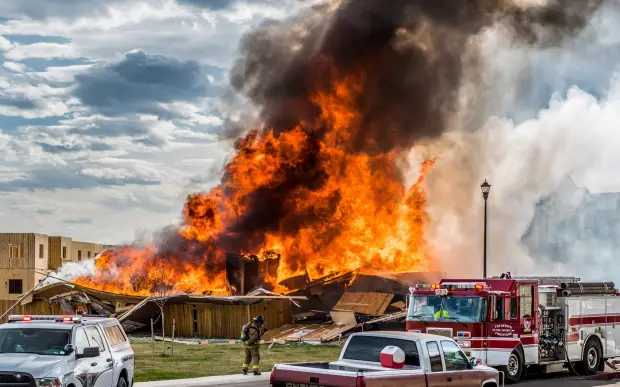
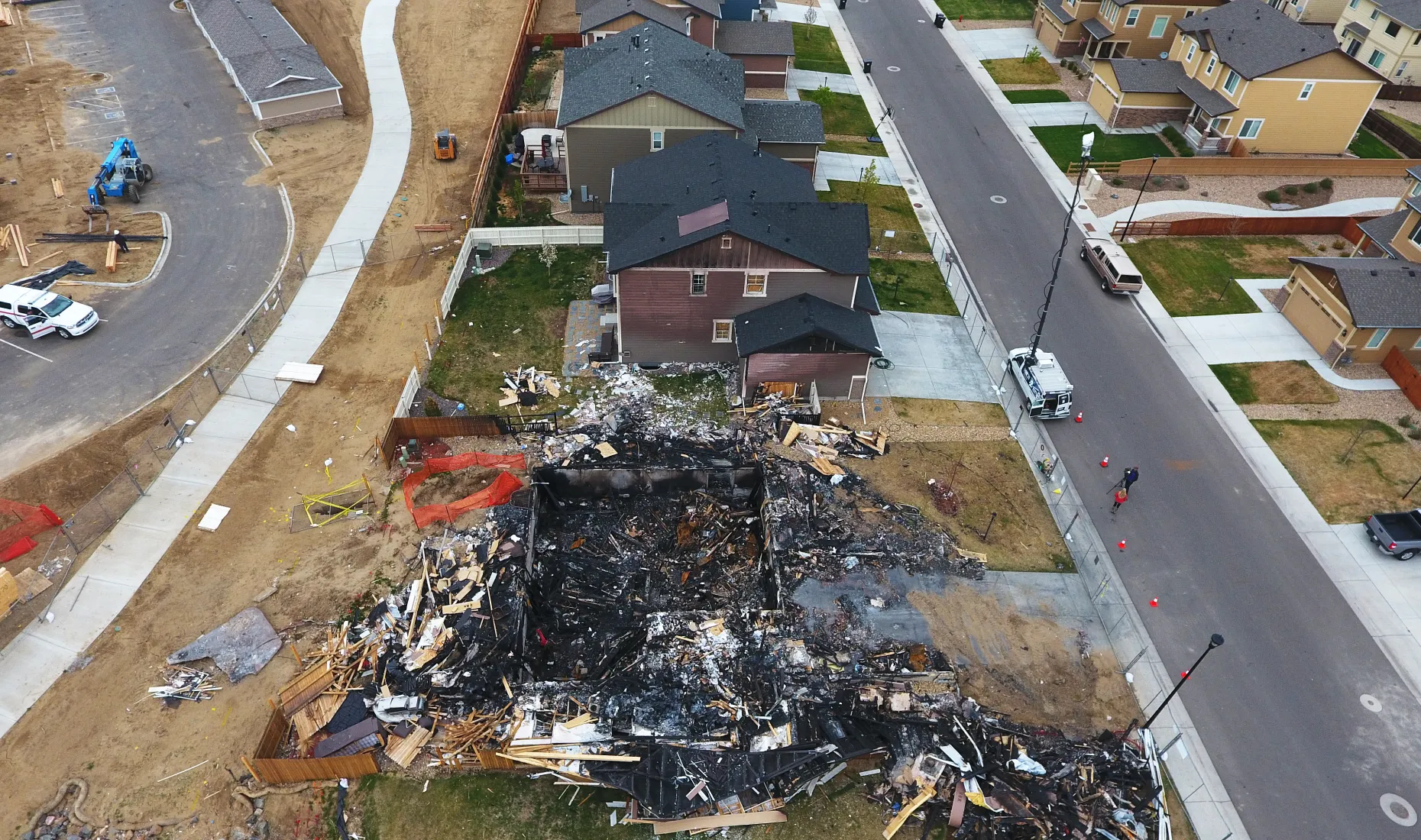
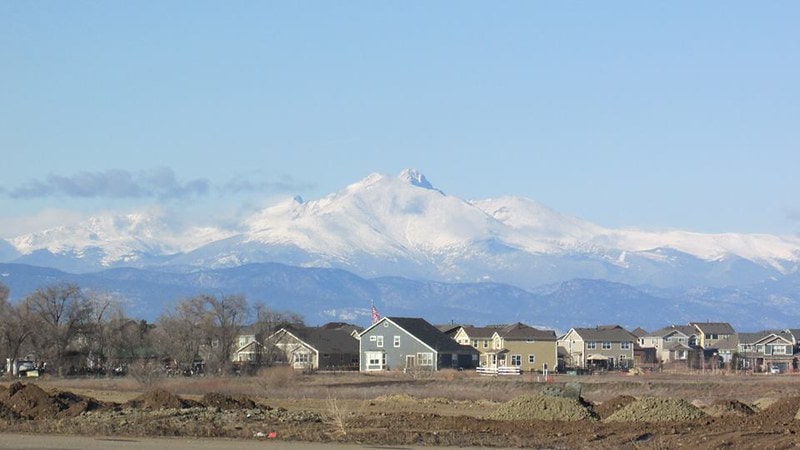
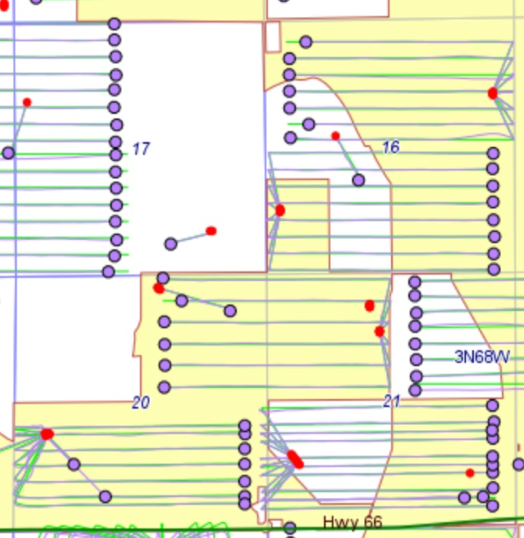
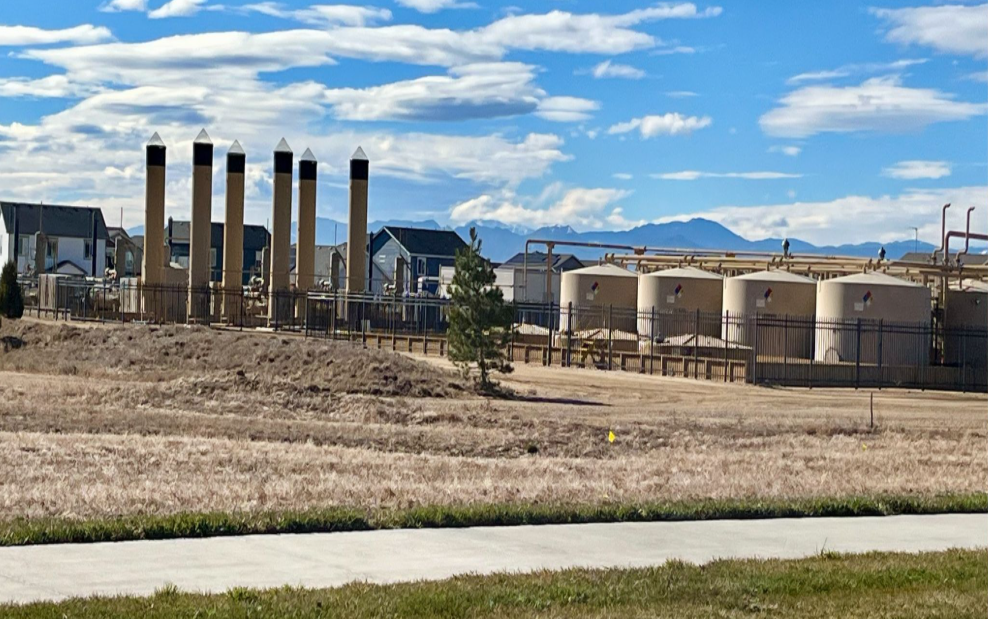 As seen in the images above, fracking sites and related activities (such as flaring) are close to neighborhoods in Mead, Weld County. In our interview with Professor Ryan, he mentioned that the EPA says operators are supposed to combust 95% of the waste gas, including greenhouse gases like methane and carbon dioxide. Since methane is more potent than CO2, operators burn off the methane. Flaring is performed because the gasses are burned off instead of simply being released into the air downwind from residential buildings.
Flaring itself has potential consequences, however; health impacts will be discussed next. As seen above, this Mead flaring/drilling site has horizontal drilling running directly underneath newly developed neighborhoods. In this situation, the drills were there before the neighborhood was developed.
As seen in the images above, fracking sites and related activities (such as flaring) are close to neighborhoods in Mead, Weld County. In our interview with Professor Ryan, he mentioned that the EPA says operators are supposed to combust 95% of the waste gas, including greenhouse gases like methane and carbon dioxide. Since methane is more potent than CO2, operators burn off the methane. Flaring is performed because the gasses are burned off instead of simply being released into the air downwind from residential buildings.
Flaring itself has potential consequences, however; health impacts will be discussed next. As seen above, this Mead flaring/drilling site has horizontal drilling running directly underneath newly developed neighborhoods. In this situation, the drills were there before the neighborhood was developed.
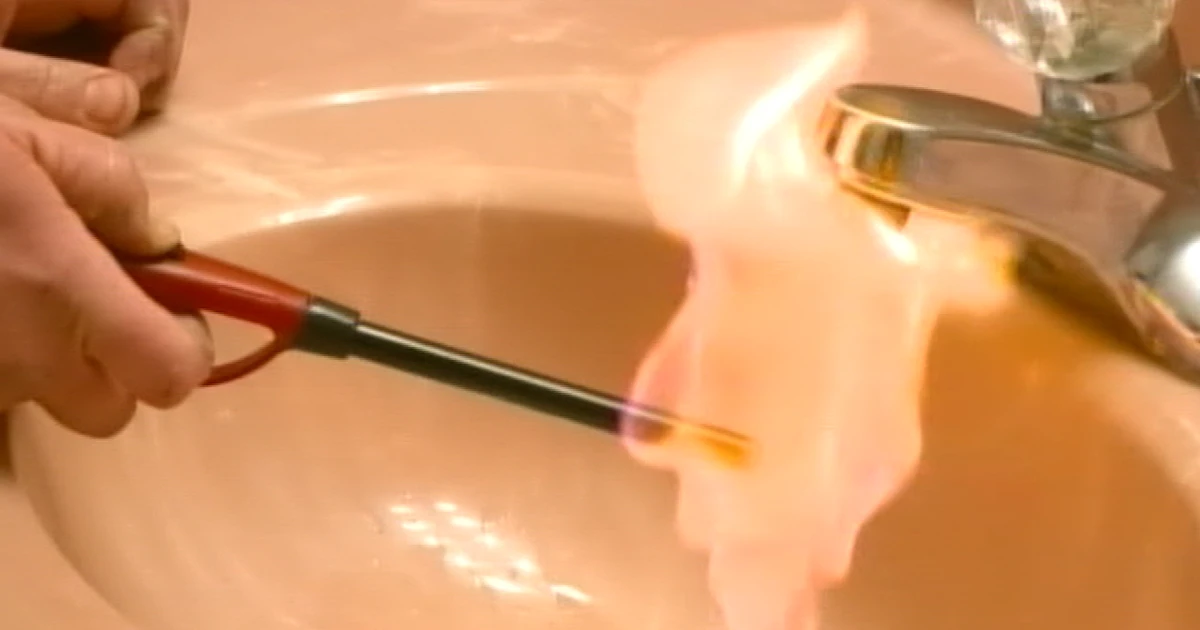
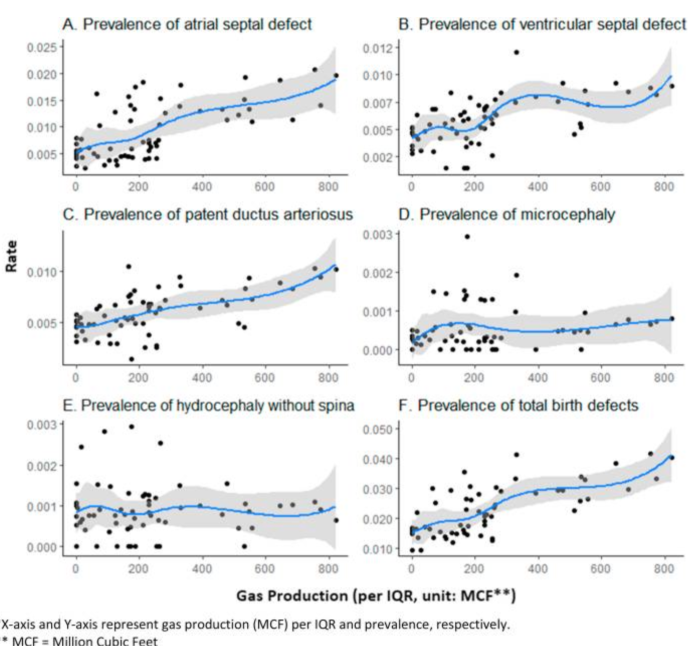 Health effects from humans proximity to fracking is primarily monitored through birth defects. Birth defects are monitored due to the fact that most are over a 9 month long period in one location. With cancer motioring often times people move around, and its timescale is much more variable.
Research in a fracking heavy region of texas shows an increase in four main birth defects. Professor Ryan reinforced the idea that negative health effects could result from fracking by alluding to the contamination of the air and water. Harmful chemicals named BTEX (Benzene, Toluene, Ethylbenzene, and Xylene) are monitored and often found in water samples near fracking sites. BTEX and other chemicals such as methane are responsible for the viral videos of people lighting their tap water on fire.
Health effects from humans proximity to fracking is primarily monitored through birth defects. Birth defects are monitored due to the fact that most are over a 9 month long period in one location. With cancer motioring often times people move around, and its timescale is much more variable.
Research in a fracking heavy region of texas shows an increase in four main birth defects. Professor Ryan reinforced the idea that negative health effects could result from fracking by alluding to the contamination of the air and water. Harmful chemicals named BTEX (Benzene, Toluene, Ethylbenzene, and Xylene) are monitored and often found in water samples near fracking sites. BTEX and other chemicals such as methane are responsible for the viral videos of people lighting their tap water on fire.
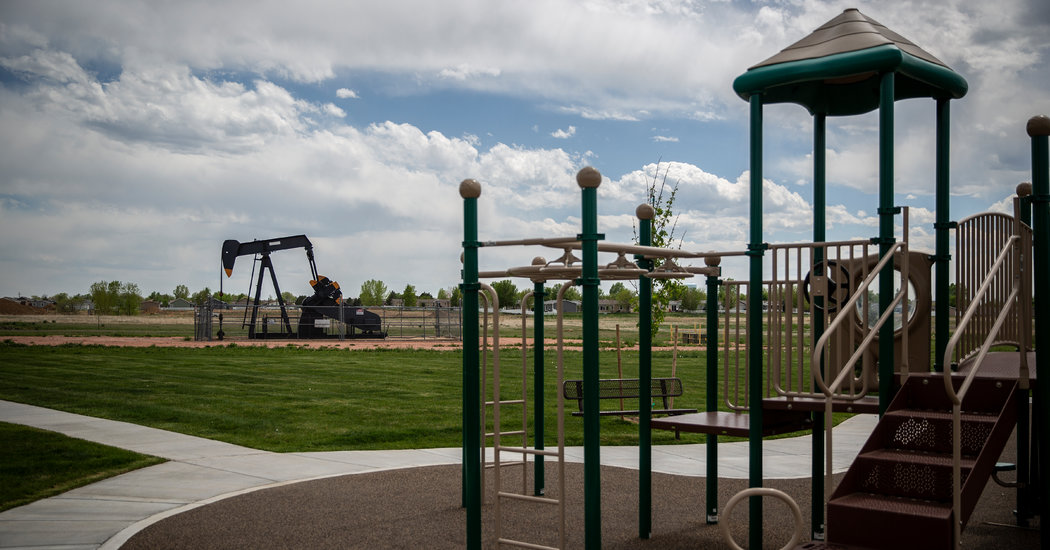
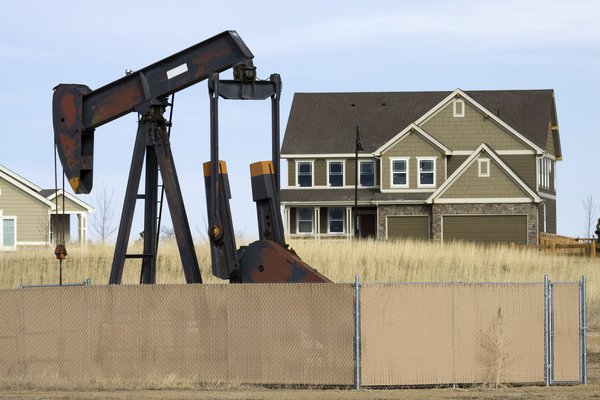
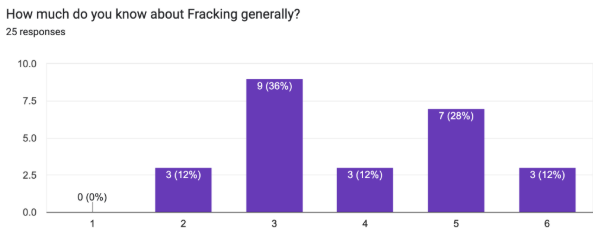
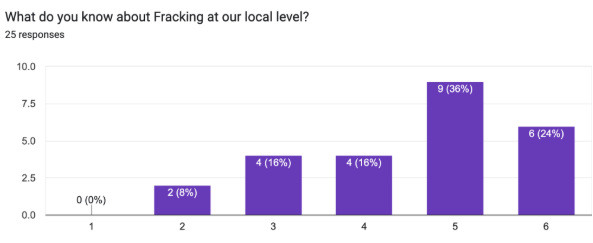
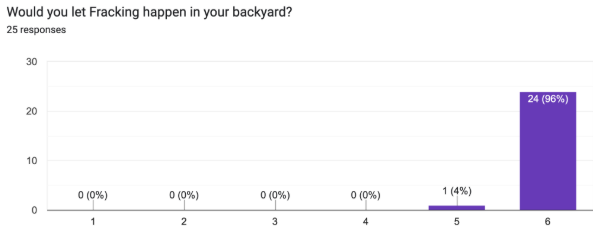
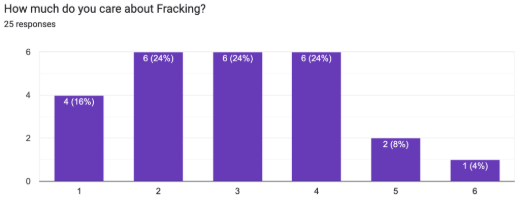
 Distribution of Results into 6 America's “Fracking”:
Distribution of Results into 6 America's “Fracking”:
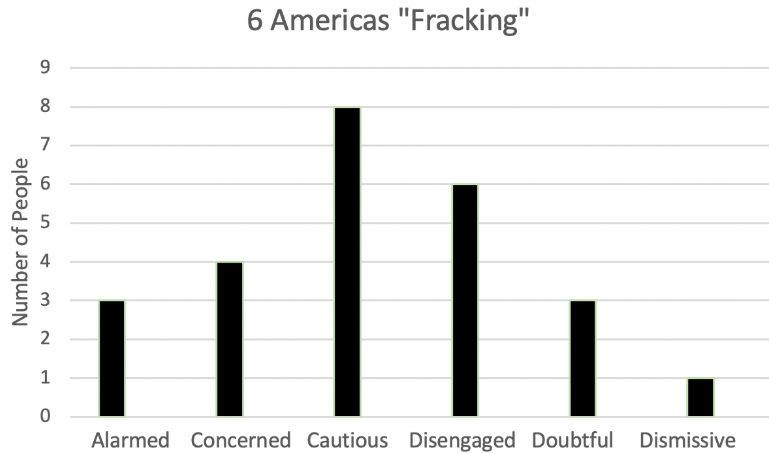 Results: Twenty-Five individuals were surveyed according to our 6 America's “Fracking”. Twenty-One students, One Professor, and Three individuals with no relationship to CU were surveyed. Most people do not know about Fracking nationally, nobody would allow fracking in their backyard, and those who did understand fracking did not know much at the local level.
Biases: Mostly CU students were surveyed, not representative of entire population knowledge. Confined to the four questions, does not show actual thought process.
Results: Twenty-Five individuals were surveyed according to our 6 America's “Fracking”. Twenty-One students, One Professor, and Three individuals with no relationship to CU were surveyed. Most people do not know about Fracking nationally, nobody would allow fracking in their backyard, and those who did understand fracking did not know much at the local level.
Biases: Mostly CU students were surveyed, not representative of entire population knowledge. Confined to the four questions, does not show actual thought process.
